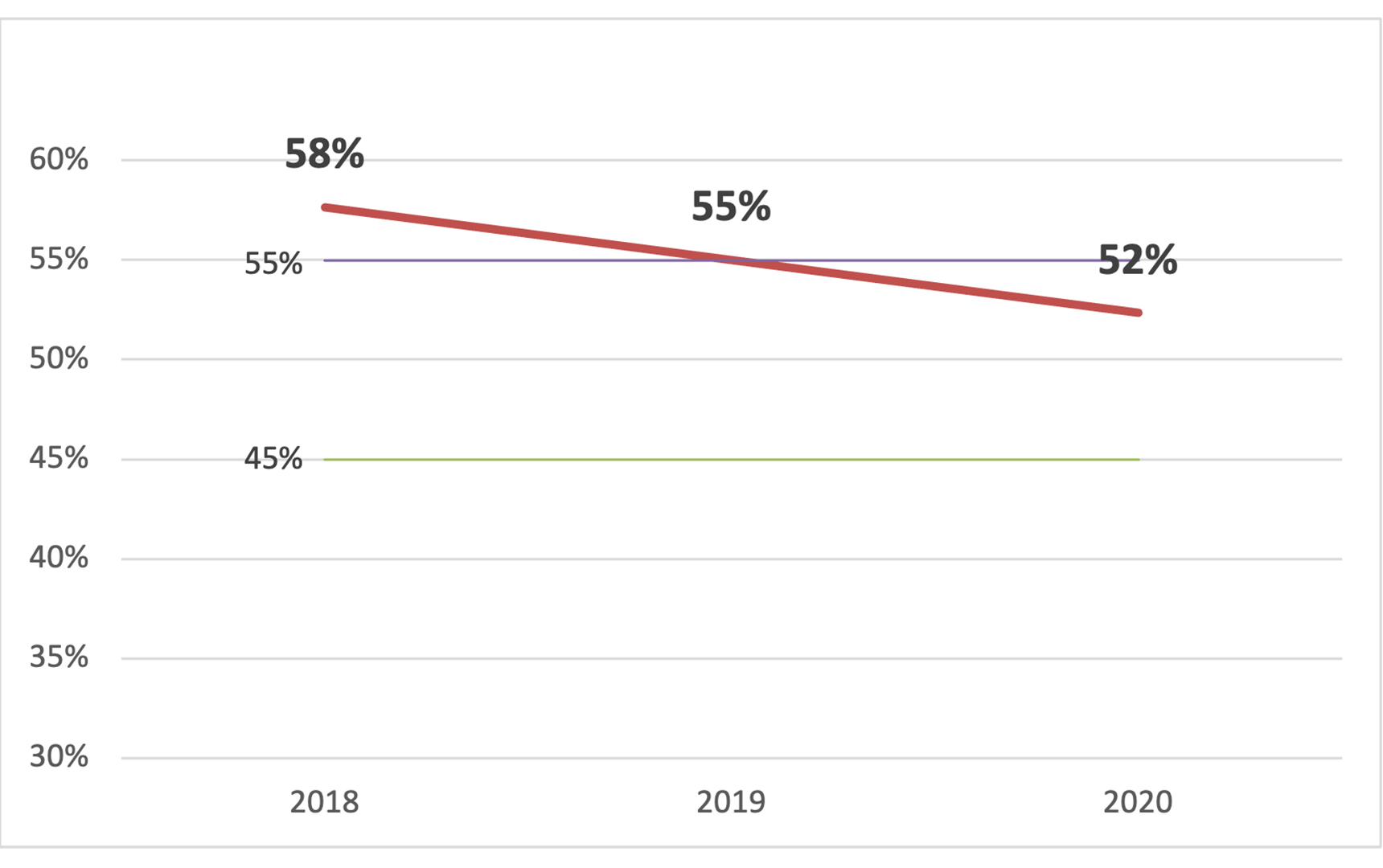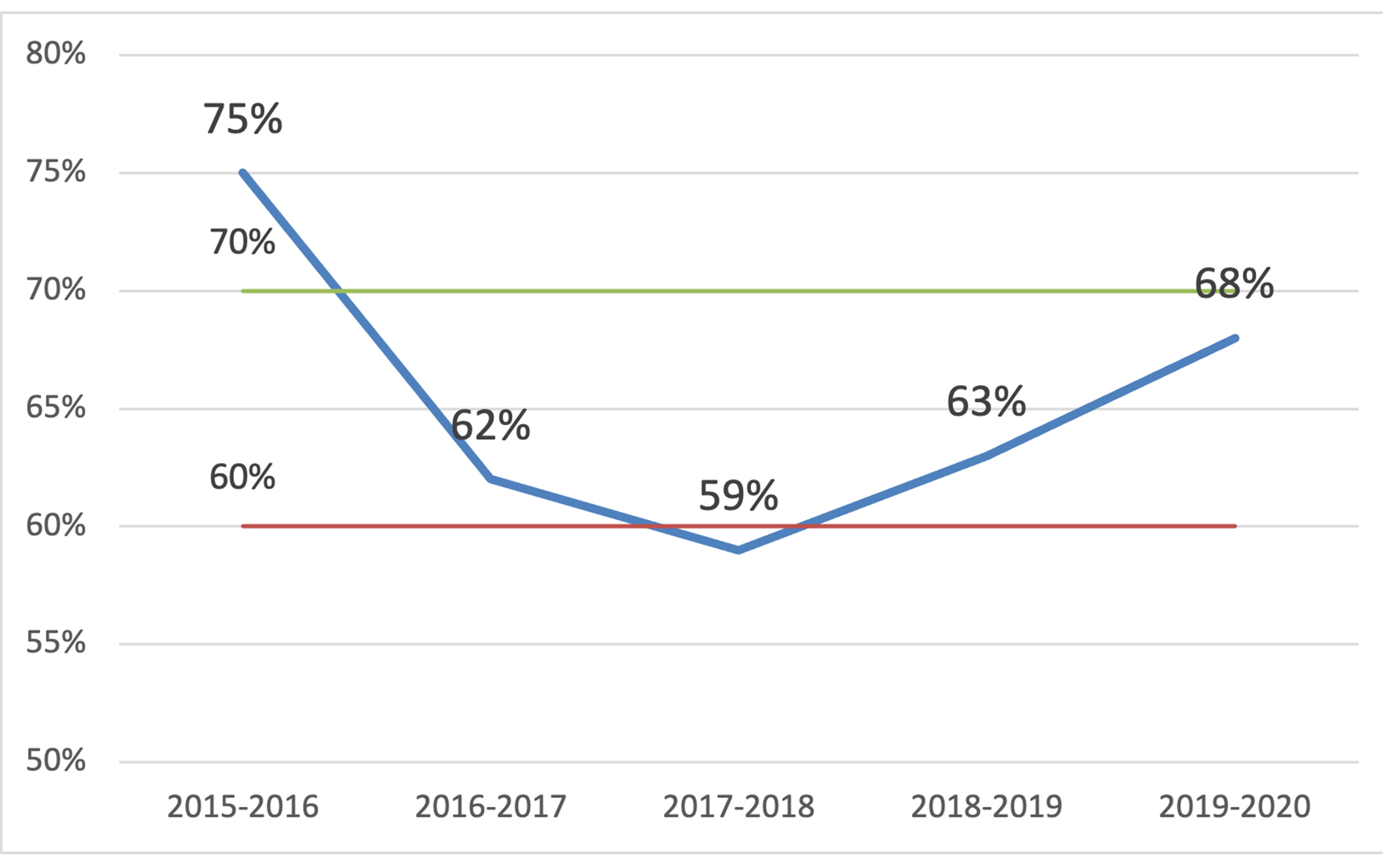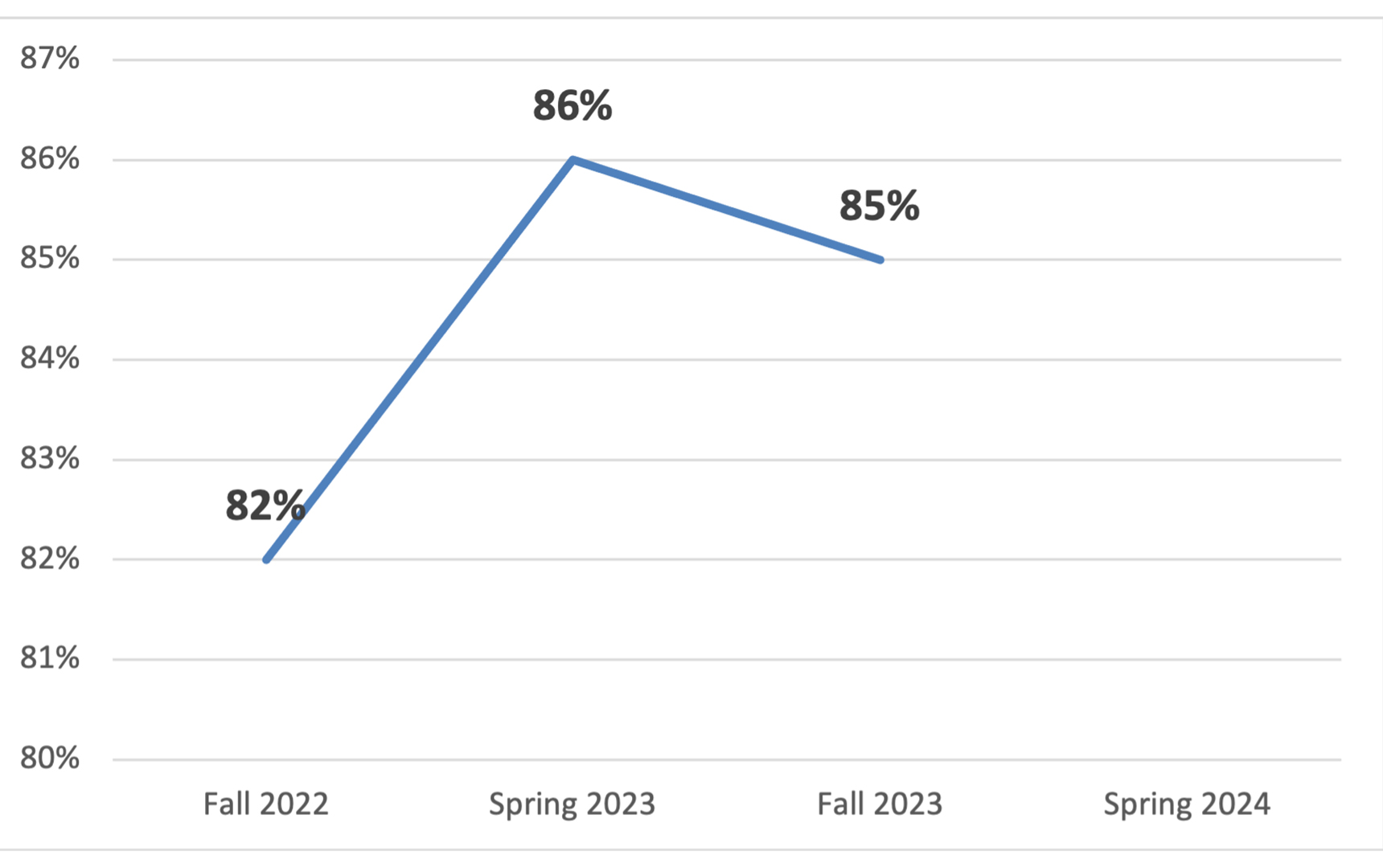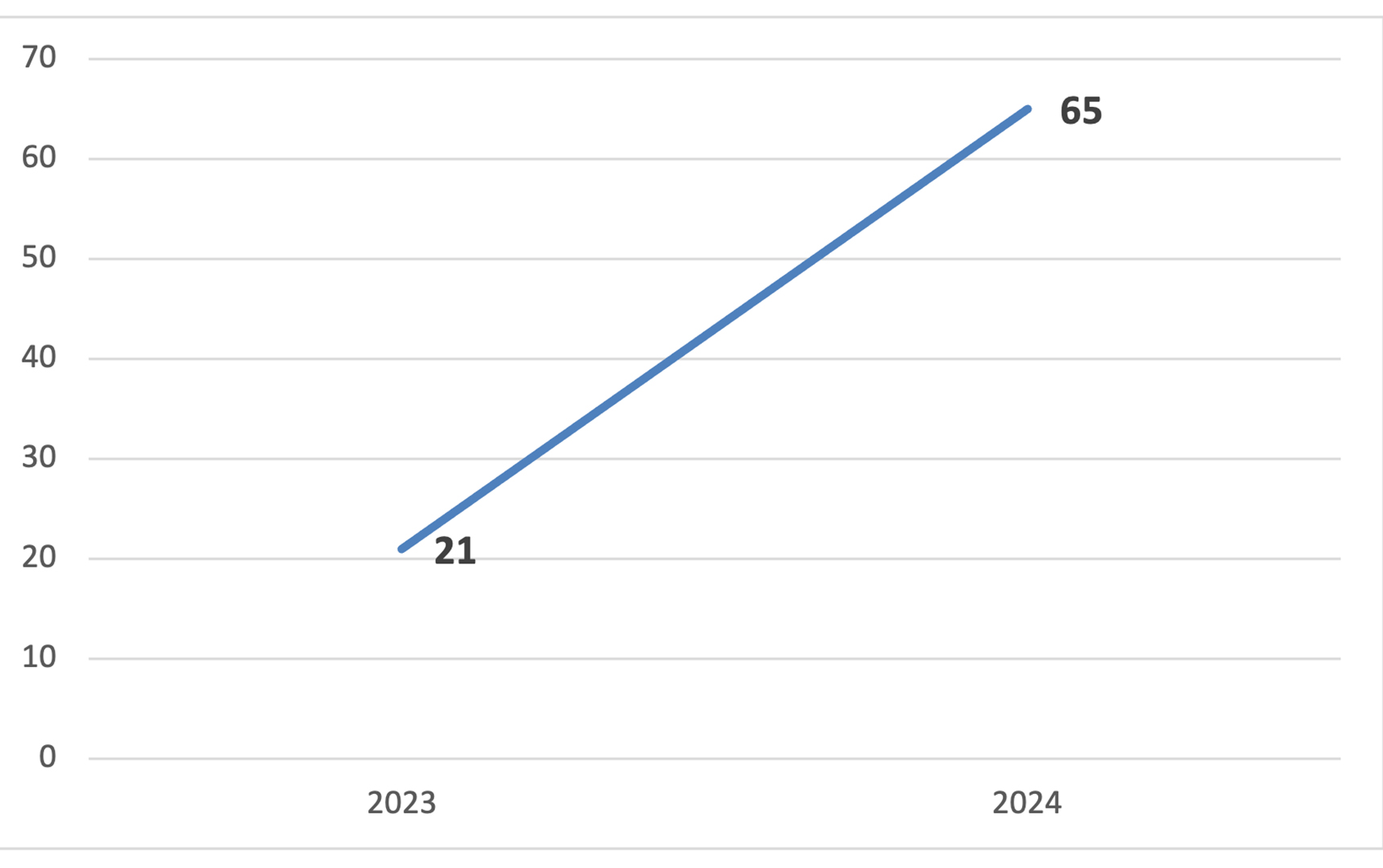Student Achievement Measures
Student Achievement Measures
In keeping with its mission and Strategic Plan, Seize Your Potential: Strategic Plan 2020-2025, Richard Bland College evaluates the following metrics:
- Graduation 150% by Fall Cohort
- Retention by Fall Cohort
- Fall-to-Spring
- Fall-to-Fall
- Persistence by Fall Cohort
- 4-Year Baccalaureate Completion
- Dual Enrollment Measures
- Percentage of students earning a C or better in DE classes
- Associate’s degrees granted to DE students
Graduation 150% by Fall Cohort
The College strives to attain a 35% three-year graduation rate. RBC’s minimum threshold for graduation rate both overall and for different demographic populations is 30%.
IPEDS Three-Year Average 150% Graduation Rate for Selected Populations, 2017-2019 Cohorts

The College also measures the graduation rate among different student populations based on gender, race/ethnicity, and socioeconomic status. RBC aims for each group to meet the target graduation rate of 35%.
IPEDS Three-Year Average 150% Graduation Rate for Selected Populations, 2017-2019 Cohorts
* small sample size, results not reported
| Men | 27% |
| Women | 38% |
| American Indian or Alaska Native | * |
| Asian | 43% |
| Native Hawaiian or Other Pacific Islander | * |
| Black or African American | 22% |
| White | 46% |
| Two or more races | 51% |
| Pell Grant recipients | 26% |
| Subsidized Stafford Loan recipients not receiving Pell Grants | 33% |
| Did not receive Pell Grants or subsidized Stafford Loans | 47% |
Retention by Fall Cohort
Retention is an institutional performance measure and is a strategic priority for the College. For Fall-to-Spring retention, the target is 90% and the threshold is 70%.
3-Year Average Fall-to-Spring Retention by Ending Cohort: First Time Students, Graduates Excluded

For Fall-to-Fall retention, RBC’s target is 65% and its threshold is 50%.
3-Year Average Fall-to-Fall Retention by Ending Cohort: First Time Students, Graduates Excluded

Persistence by Fall Cohort
The College’s strategic target goal for student persistence is 55%. The threshold for student persistence is 45%.
Three-Year Average Persistence by Cohort: Currently Enrolled – Graduated – Transferred to Another College, First Time Students Full- and Part Time

4-Year Baccalaureate Completion
While Baccalaureate completion is not part of the Richard Bland mission, we do monitor the baccalaureate completion of our transfer students. Its target goal for Baccalaureate completions is 70% of all transfer students and its threshold is 60%.
4-Year Completion Rates of RBC Students Transferring in Fall and Spring of Designated Year

Dual Enrollment Measures
In recent years, the Dual Enrollment student population has increased rapidly. RBC does not have data from enough years to set valid thresholds or goals for achievement on DE measures.
Percentage of Students Earning a C or Better in DE Classes, Fall 2022-Spring 2024

Figure 7: DE Students Earning Associate’s Degrees, 2023 & 2024
